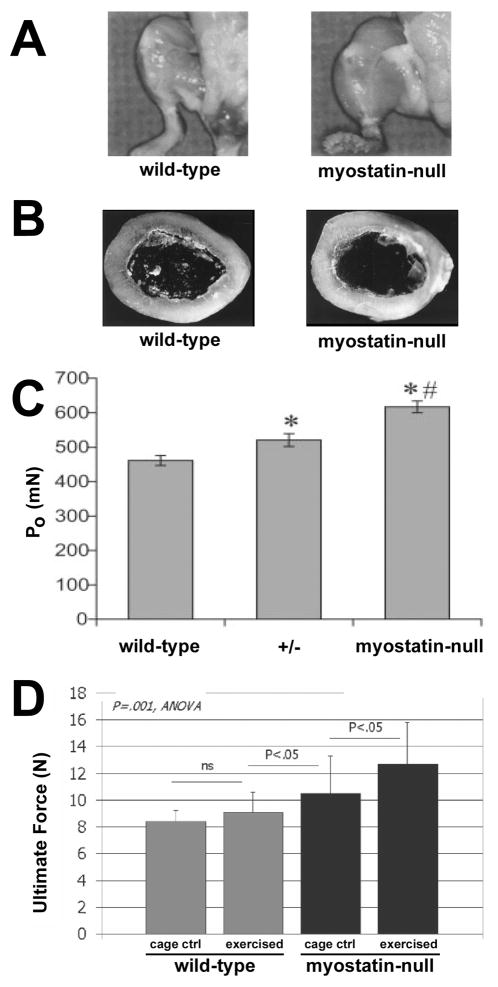Figure 3.
Myostatin deficiency results in skeletal muscle overgrowth (A), but the long bones of inactive mice are not affected by the double-muscle phenotype (B). Maximal tenatic force (PO) was increased significantly by the mutation. When challenged with exercise, the myostatin null mice gained significantly more bone than wild-type mice, as revealed by the 30% increase in bone strength (untimate force) among mutants. From McPherron et al., (13) Hamrick et al., (7) Mendias et al., (14) and Hamrick et al.(8)

